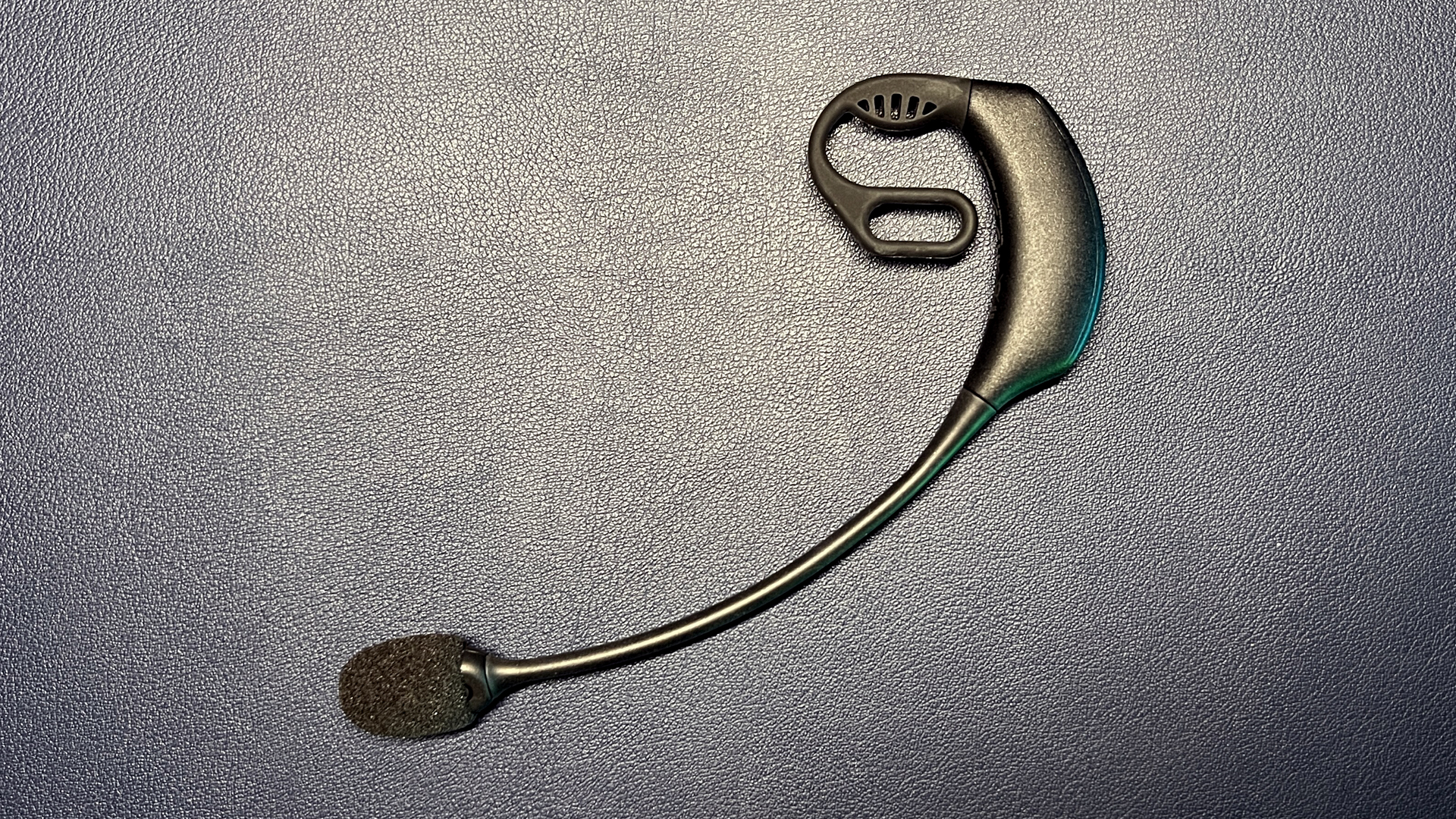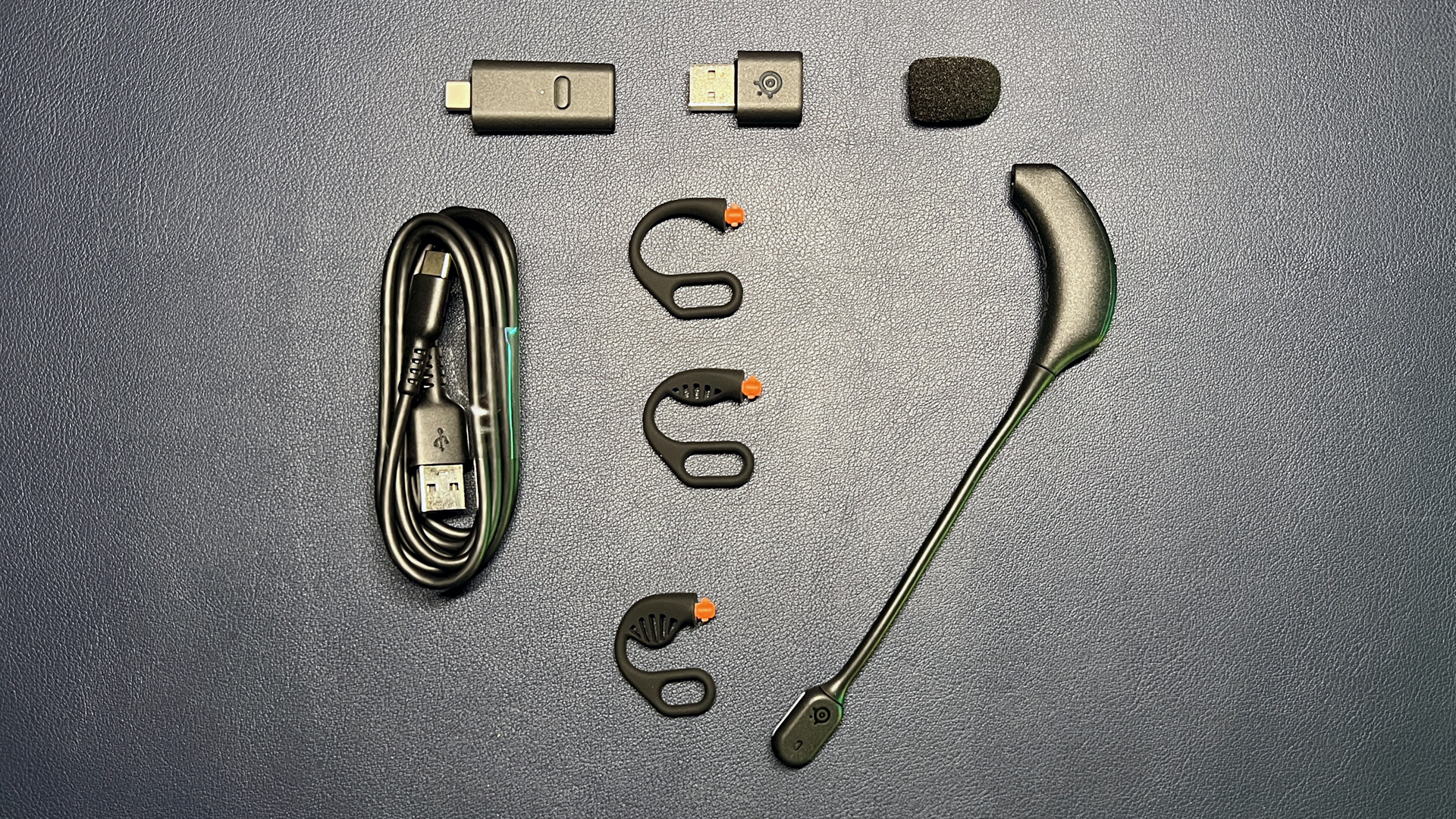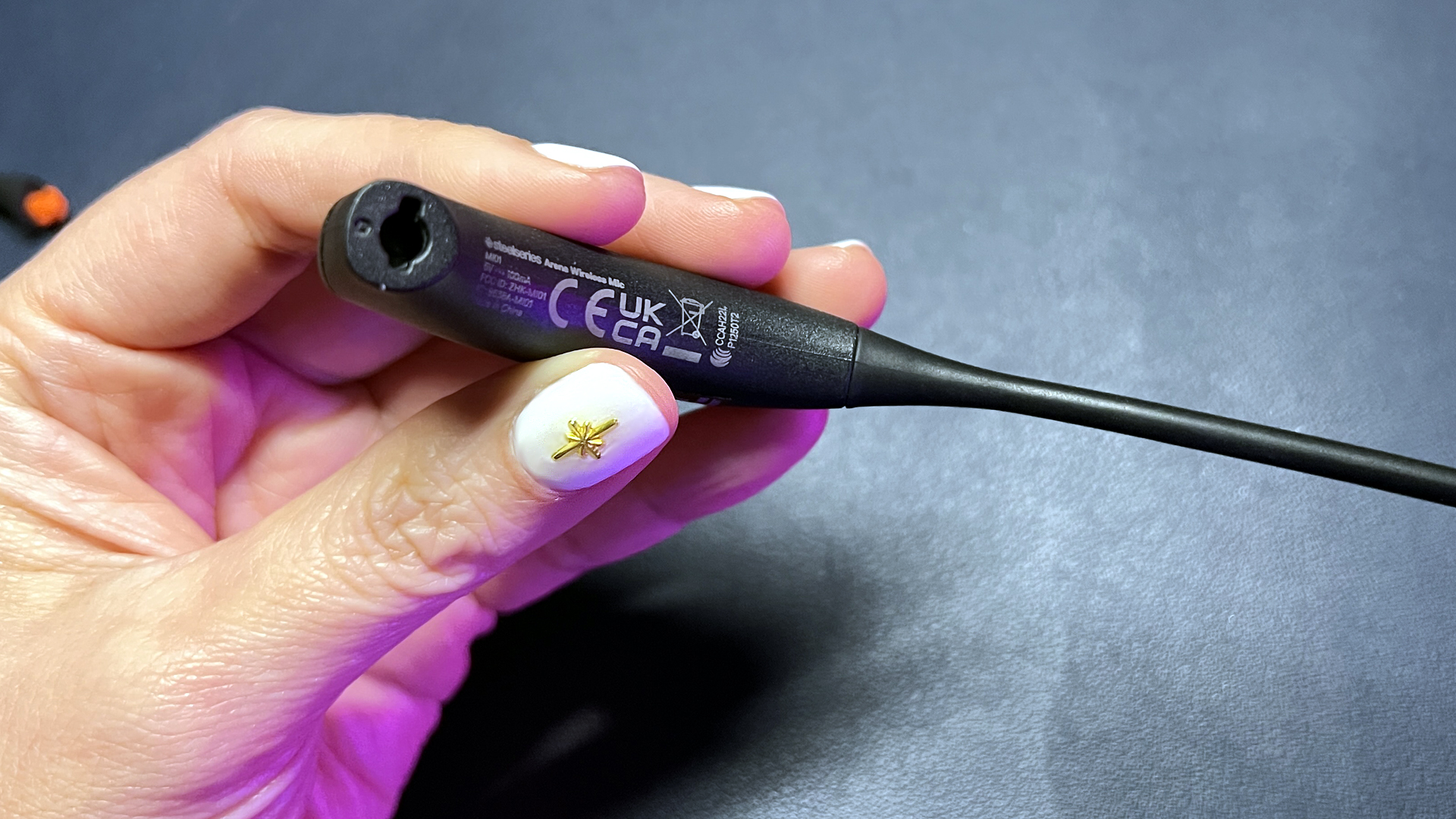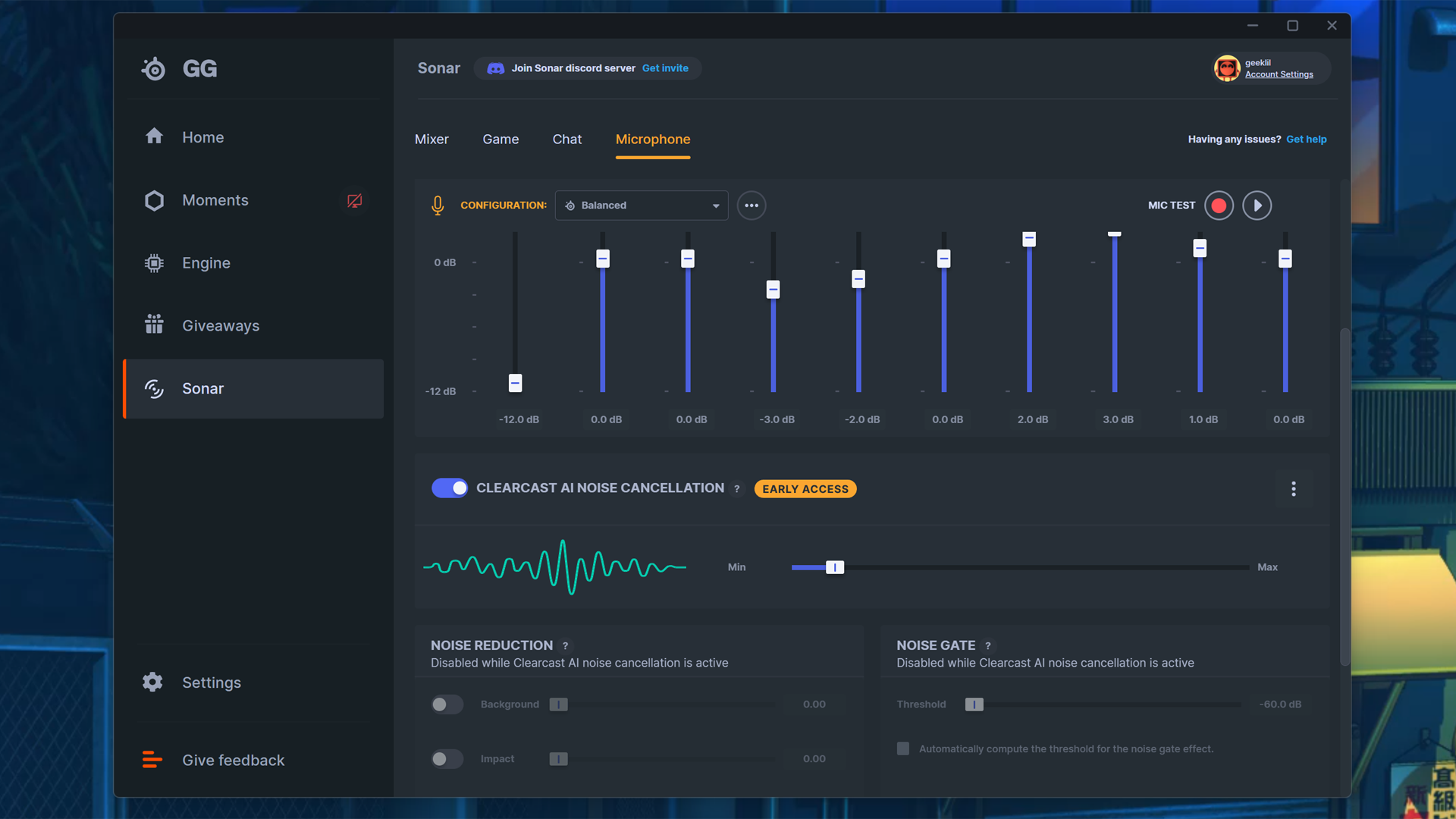Tom's Hardware Verdict
The Arena Wireless Mic is a wireless, on-ear mic designed to work with speakers — and it does a great job of delivering clear, noise-free vocals even while you’re blasting music. But that’s basically all it does.
Pros
- +
Very lightweight
- +
Supercardioid polar pattern does a great job of picking up your voice
- +
Great noise isolation
Cons
- -
Fit feels insecure
- -
Only 4.5 hours of battery life
- -
Can’t be hidden
- -
$100 for what is basically 1/3 of a headset
Why you can trust Tom's Hardware
SteelSeries just launched its first line of gaming-oriented desktop speakers — the Arena 3 (2.0), 7 (2.1), and 9 (5.1). But the problem with desktop speakers is that they’re generally more suited to home entertainment, and they don’t make a ton of sense in a lot of online gaming and streaming setups where you need both audio output and input.
But...maybe they could, with the Arena Wireless Mic — a noise-canceling on-ear microphone designed to work with speakers (and launched alongside the Arena lineup). Thanks to a supercardioid polar pattern and a boost from SteelSeries AI-powered noise-cancellation software, the Arena Wireless Mic lets you have the best of both worlds: Immersive, surround-sound speaker audio and noise-free, crystal-clear team chat.
The Arena Wireless Mic features 2.4-GHz wireless connectivity, 4.5 hours of battery life, has a lightweight, comfortable design, and works as advertised — picking up the wearer’s voice without picking up everything that’s coming out of their speakers. The Arena Wireless Mic is available now, and costs $100, which is around mid-range when it comes to the best gaming microphones. But this isn’t really a gaming microphone; it’s more of a niche product — and I’m not totally sure it has a niche.
Design and Comfort of the Arena Wireless Mic
The Arena Wireless Mic is an on-ear wireless microphone designed to work with speakers. Specifically, SteelSeries’ new Arena speakers, but it’ll work with any speakers — it doesn’t have any sort of special interaction with the Arena line.
The Arena Wireless Mic consists of a supercardioid microphone at the end of a flexible arm, which is attached to a battery pack that sits behind your ear. The battery pack is held in place by a flexible earhook, which can be swapped out for a better fit based on your ear size.
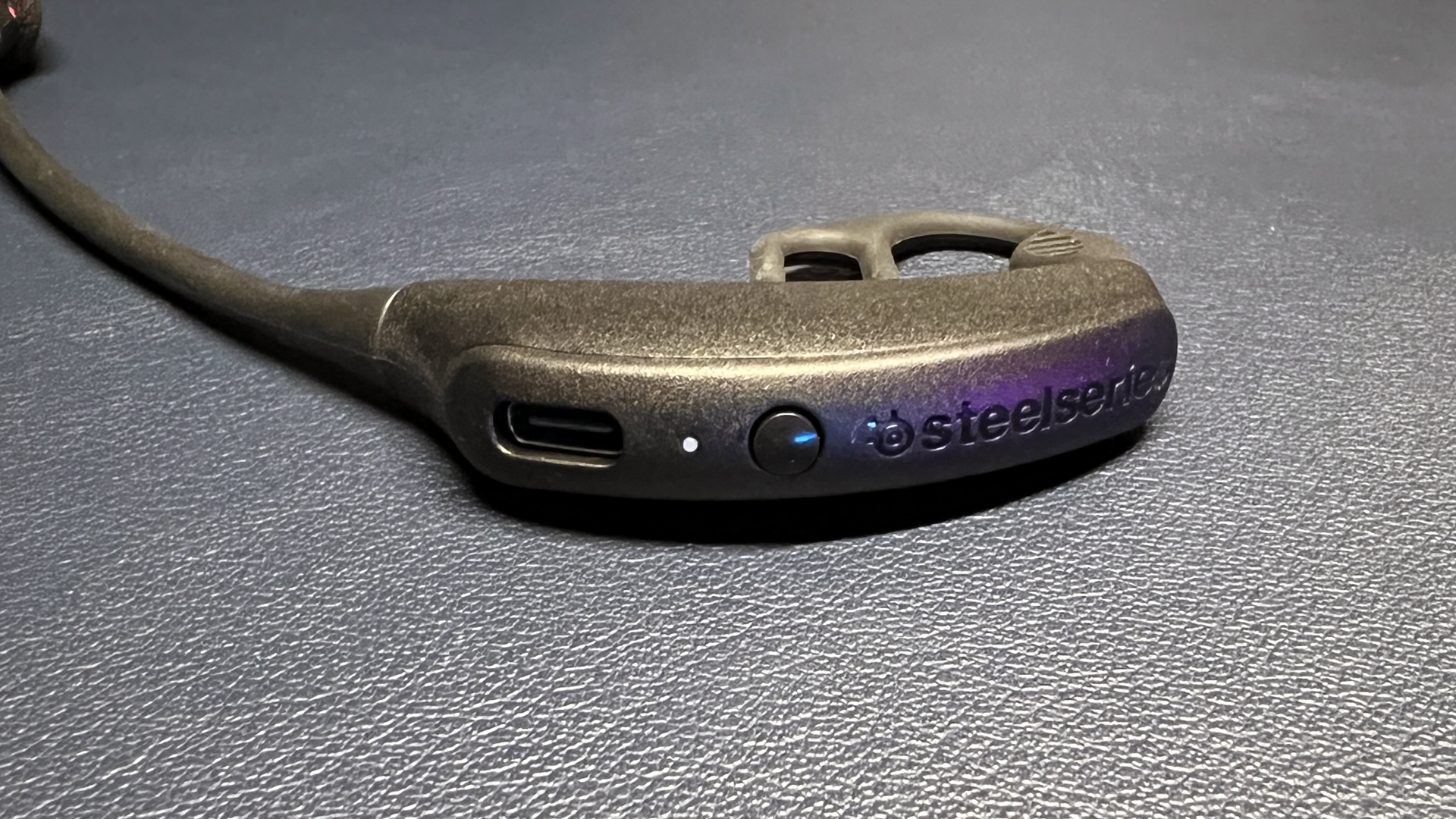
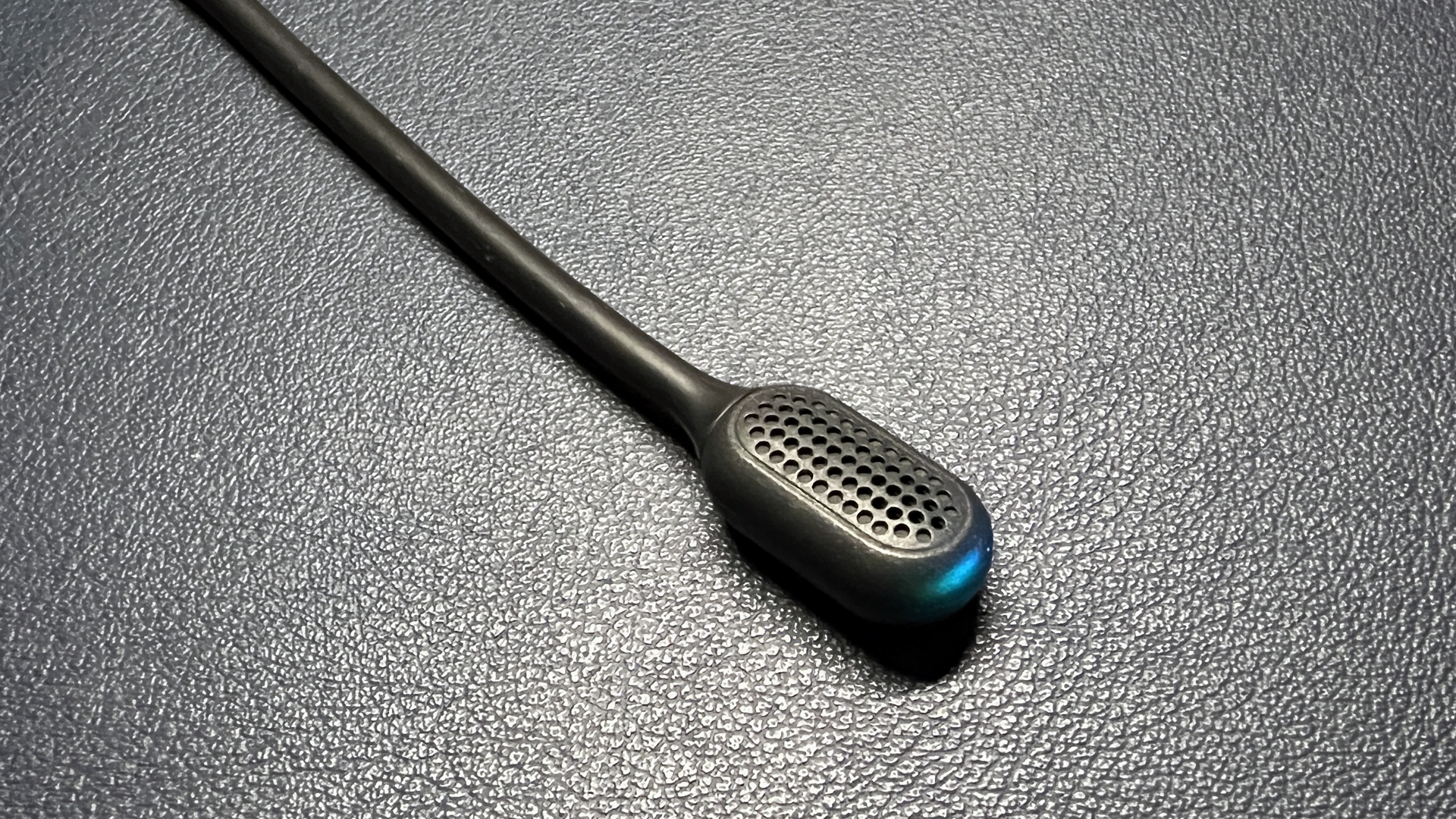
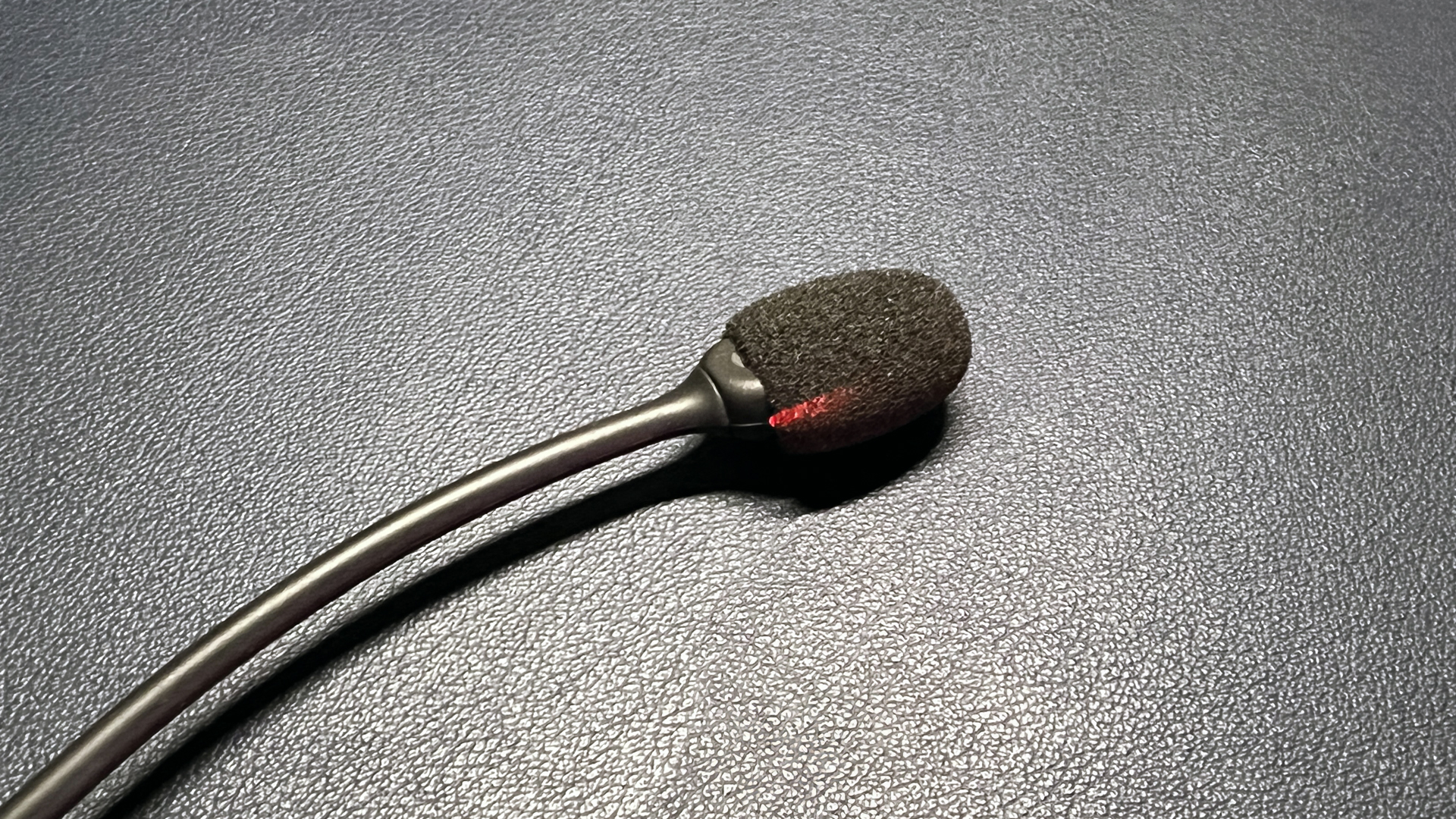
On the back of the battery pack, there’s a USB-C charging port, a small indicator LED, and a multi-function power/pairing/mute button. Holding the button down for one second turns the microphone on; tapping the button while the microphone is turned on toggles mute/unmute. When the microphone is muted, you’ll see a red light on the mic itself — the light is bright enough to see out of the corner of your eye when you’re wearing the mic, even with the pop filter in place.
The Arena Wireless mic comes with three flexible earhooks in different sizes (small, medium, large), a 2.4-GHz wireless USB-C dongle, a USB-C to USB-A converter, a pop filter, and a USB-C to USB-A charging cable. The earhooks attach to the microphone with a simple twist, and are easy to switch out.
Get Tom's Hardware's best news and in-depth reviews, straight to your inbox.
Wearing the Arena Wireless Mic is fine — it’s comfortable, mostly because it’s so lightweight you’ll forget it’s even there. But the way the earhook fits — it wraps around the front of your ear and tucks under the antihelix — doesn’t feel super secure (and this will also vary based on ear anatomy). I found the medium-sized earhook gave me the best fit (and I would say I have medium-sized ears), and even when I had the mic properly secured, it still seemed a little shaky. It didn’t fall off during my testing, but I definitely had a couple of close calls when I turned my head quickly.
Specs
| Frequency Response | 100 - 10,000Hz |
| Polar Pattern | Super Cardioid |
| Sensitivity | -12dBv/Pa |
| Resolution and Sample Rate | 16-bit/48kHz |
| Connectivity | 2.4GHz wireless |
| Software | SteelSeries GG (Sonar) |
| Dimensions | 7.5 inches / 190mm (length) |
| Weight | 0.59oz / 17g |
Performance of the Arena Wireless Mic
The Arena Wireless Mic has a supercardioid (unidirectional) polar pattern, with a 150-degree acceptance angle — narrower than the 180-degree acceptance angle of a standard cardioid mic. This allows it to pick up your voice and nothing else — even if music, gunshots, and teammate chatter is blasting through a surround-sound speaker setup.
I tested the Arena Wireless Mic over the course of a week in a variety of situations — work conference calls, group video chats with friends, online gaming with strangers — and it performed shockingly well. When my speakers were set to a reasonable volume, none of my colleagues, friends, or randomly-assigned teammates could audibly tell I wasn’t wearing headphones. This was the case regardless of what was coming out of my speakers — music, explosions, voices, or any combination thereof.
It wasn’t until I cranked my speakers up to an uncomfortably high volume that others started mentioning the background noise on my end. Even at this point, the background noise wasn’t an issue when I was talking — the mic still picked up my voice, loud and clear — it was only when I wasn’t talking that listeners started hearing my music.
The Arena Wireless Mic is a supercardioid mic, which means it basically needs to be aimed directly at your mouth to work. The mic’s four-inch flexible arm is easy to position correctly, and when positioned correctly, the mic is very visible (“you sort of look like an air traffic controller,” is what my colleagues said). This might not seem like a big deal, but one of the big reasons to upgrade your microphone is so you can hide it — and broadcast/stream/create content without the encumbrance of a headset.
Software for the Arena Wireless Mic
The Arena Wireless Mic doesn’t need software to work, and, in fact, doesn’t actually come bundled with software — it doesn’t have a profile or settings in the SteelSeries GG Engine, though it shows up in Sonar, SteelSeries’ relatively robust companion software for its audio products (headsets, speakers, mics), as a standard input.
Sonar has an independent 10-band microphone EQ, which you can use to tweak how your voice sounds (a handful of presets with names such as “less nasal” and “broadcast high pitch” are supplied, if you’re not sure where to begin). There are also several noise-reduction settings that you may or may not need, including AI-powered noise-cancellation (still in early access). These settings do a good job of helping improve noisy environments on headset mics (albeit, at the expense of audio quality), but weren’t as necessary with the Arena Wireless Mic, which already isolates noise well.
Battery Life on the Arena Wireless Mic
The Arena Wireless Mic gets 4.5 hours of battery life, which probably seems somewhat dismal compared to the best wireless headsets, which last anywhere from 24 to 300 hours. But this isn’t a headset, it’s a mic — and it’s much, much smaller and lighter than any gaming headset. There aren’t a ton of (or any) wearable wireless gaming mics on the market; lavalier mics can last anywhere from six to 10 hours, but they also have larger, heavier hidden battery packs.
Considering how lightweight the Arena Wireless Mic is, 4.5 hours of battery life still isn’t particularly impressive, but it’s reasonable. Of course, this won’t necessarily make you feel better when your mic cuts out during a marathon streaming session. Luckily the Arena Wireless Mic has a fast-charging feature (15 minutes nets one hour of use), and can also be used while it’s charging. The status LED on the mic’s battery pack flashes different colors to indicate remaining battery life (green, yellow, red); when the battery is extremely low, the red mute LED on the microphone will blink rapidly.
Bottom Line
The Arena Wireless Mic is...interesting. It’s got plenty going for it — it’s lightweight and comfortable, and it works flawlessly with speakers. But that’s what it seems like — an accessory for speakers, not an additional $100 purchase on top of a $550 speaker system.
The Arena Wireless Mic is very good at one thing — voice-isolation for chatting, video conferencing, and casual streaming. But it’s not very versatile; it doesn’t have multiple polar patterns like the HyperX QuadCast, it can’t record in hi-res 24-bit/96 kHz like the Beyerdynamic Fox USB Studio Microphone, and it can’t be mounted on a boom (or even switchers to the right side of your face). If you’re dead-set on listening to all audio loudly, through surround-sound speakers, the Arena Wireless Mic might work for you — otherwise, you may just want to put that $100 toward one of the best gaming headsets.

Sarah Jacobsson Purewal is a senior editor at Tom's Hardware covering peripherals, software, and custom builds. You can find more of her work in PCWorld, Macworld, TechHive, CNET, Gizmodo, Tom's Guide, PC Gamer, Men's Health, Men's Fitness, SHAPE, Cosmopolitan, and just about everywhere else.
